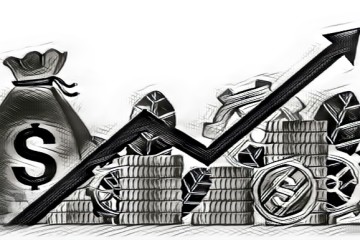Lesson 13: Key Economic Concepts
The world of finance and economics might seem like a complex maze, but when broken down into its fundamental components, it becomes much more comprehensible. In this lesson, we'll dive into the basic concepts of economics that everyone should grasp, providing you with a foundation for making informed financial decisions.
Economy: The Engine of Wealth Creation
The term "Economy" often pops up in conversations, especially during discussions about financial matters. But what exactly does it mean? At its core, the economy is the intricate web of activities within a society that revolves around the creation and utilization of wealth.
Wealth isn't limited to money; it encompasses the production of goods and services. Goods refer to tangible items like apples, cars, and infrastructure, while services include activities like banking, healthcare, and education. The individuals who purchase these goods and services are referred to as consumers.
Factors of Production
The process of generating goods and services involves three primary factors:
--- Land: This factor isn't just about vast landscapes; it encompasses all resources from nature, like minerals and oil, that contribute to production.
--- Labor: People who work for wages or profits are a crucial factor in production. The effort they put in drives economic activities.
--- Capital: Capital represents the tools, factories, and technology utilized in producing goods and services. It's an essential facilitator of economic growth.
Industries and Markets
Industries group companies producing similar goods or services. Manufacturing industries create physical products, while service industries provide intangible services. The interaction between producers and consumers occurs within markets, where products are exchanged for money.
Demand and Supply: The Pillars of Economics
Two fundamental concepts, demand and supply, shape the dynamics of economics.
--- Supply: This refers to the quantity of a product available for purchase. The law of supply asserts that as prices rise, companies increase their production of that product.
--- Demand: Demand signifies the desire to purchase a product. The law of demand posits that as prices increase, the quantity demanded decreases.
In a free market, the equilibrium price of a product is determined by the interplay between supply and demand. Four primary scenarios arise:
--- Increased supply and constant demand -> lead to price reduction.
--- Decreased supply and constant demand -> result in price escalation.
--- Constant supply and increased demand -> cause prices to rise.
--- Constant supply and decreased demand -> lead to price decline.
Numerous factors influence demand and supply, from consumer preferences to economic shifts. For instance, a football team's victory might boost jersey sales (increased demand), while a factory fire might decrease shirt production (decreased supply).
Factors Affecting Demand:
--- Income: Higher income can elevate demand.
--- Population: More people mean more consumers and increased demand.
--- Preferences: Changing preferences can alter demand.
--- Competition: Rivalry impacts demand, e.g., when competitors raise prices.
Factors Affecting Supply:
--- Sellers: Increased sellers boost supply.
--- Technology: Technological advancement can raise production.
--- Resources: Resource allocation affects supply.
--- Manufacturing Costs: Higher costs lower supply.
Inflation: Unraveling the Price Puzzle
Inflation, a common term in economic discussions, refers to rising prices. Imagine a baseball bat that cost $20 two years ago but now sells for $25. Inflation isn't inherently negative; moderate inflation often signifies a growing economy. Yet, excessive inflation erodes purchasing power.
Causes of Inflation:
--- Demand-side Factors: When demand surpasses supply, prices rise. For instance, limited ice cream supplies can increase its price.
--- Cost-side Factors: Higher production costs lead to price hikes.
--- Built-In Inflation: Rising living costs necessitate higher wages, which companies offset by raising prices.
Inflation Rate:
The rate at which inflation occurs is influenced by economic variables. Central banks, like the Federal Reserve in the US, regulate inflation through policies. The target inflation rate usually hovers around 2-3%.
Time Value of Money: Harnessing Financial Potential
Understanding the time value of money is pivotal for making prudent financial decisions. In essence, a dollar today holds more value than the same dollar tomorrow due to the potential for immediate investment and interest accumulation.For example: Consider having a choice between receiving $100,000 today or $105,000 a year later. Opting for the latter may seem profitable, but the time value of money reveals that the former is wiser. By investing the $100,000 today at a 10% interest rate, you could yield $10,000 in a year, totaling $110,000. This demonstrates that receiving $100,000 now can outweigh the $105,000 offered later.
Understanding these foundational economic concepts empowers you to navigate financial waters with confidence. From comprehending supply and demand dynamics to unraveling the intricacies of inflation and harnessing the time value of money, these insights lay the groundwork for informed financial decisions. As you understand the world of finance, remember that economics isn't just about numbers; it's a dynamic interplay that shapes societies, markets, and your financial future.

@ayuecosystem #kids #youngadults #FinancialLiteracy #BasicEconomics #FinancialLiteracy #EconomicConcepts #EconomyExplained #SupplyAndDemand #InflationInsights #TimeValueOfMoney #FinancialEmpowerment #MoneyMatters #YouthFinance #SmartMoneyMoves #EconomicPrinciples #ConsumerInsights #MarketDynamics #InvestmentWisdom #FinancialEducation